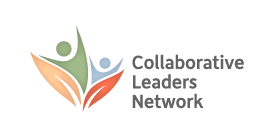Writing skills are lacking.
Working group members may have the knowledge to lead caucuses but lack the writing skills required to produce a report. An offer to help by convener or institutional staff may be rejected if trust has not been adequately built. Alternatively, experienced writers in the group may be willing to take on additional assignments to support less experienced caucus group leaders. Another option to consider is to contract third parties.
Participants are reluctant to take on writing.
Participants may be cautious about offering to take on writing assignments for a number of reasons, including: existing work load; conflicts between the findings and recommendations of the group and their agency’s official positions on matters; conflict with their personal positions; or fear of being accused of skewing content. Framing the opportunity as one of preparing a “draft” for group review and modification may kick-start contributions. If resources permit, retaining an intern or external writer is also an option.
Teams are reluctant to share drafts.
The convener staff and group members may want to work on and complete their assignments in isolation before sharing with the others. The exchange or sharing of drafts may require facilitator support or intervention to overcome impasses over who will share what products with whom and when. As a start, the facilitator may want to tease out the basis for withholding and ask the group, “What is the consequence of omitting information from our decision making?”
There are different opinions as to the intended audience(s) for final report.
A report that is primarily geared for an institutional as opposed to a community reader results in differences of opinion on matters such as tone and appearance of the document. It’s important to arrive at an understanding of who the audiences are and figure out a way to make the report work on more than one level. In some cases, the data is presented separately from the basic findings, allowing the report to be read and understood at different levels of detail.
Convener wants organization’s positions to be reflected.
It is important to anticipate emerging conflicts between the findings and recommendations of a working group and the public positions held by the convener organization. Even when the findings and recommendations of the working group are at odds with the convener team, the report cannot alter the group’s conclusions. Conversations about this tend to work best with a small editorial group that is moderated by the facilitator. There are a number of ways the group can handle disparate views in the final report:
- reach an accord on one or the other position prevailing, or arrive at a jointly supported brand new position;
- present both positions on a particular issue, with descriptive narrative supporting the rationale for each;
- include a minority report.
Facilitator may be tempted to step out of neutral role to offer advice or guidance.
Where the facilitator could make a major difference in helping a wishful group become realistic, or in helping a worried group become less cautious, he or she may be tempted to weigh in. (This is the first stage in which this is even a possibility, as the facilitator is no longer as pivotal to keeping the group working effectively.)
The facilitator needs to follow two guiding principles: 1) do no harm, and 2) raise questions. The facilitator can help the group step back and evaluate its current logic by asking questions such as, “How would that idea play out?” or “What other strategies might there be?”
Attendance becomes sporadic.
People miss meetings due to legitimate, unforeseen schedule conflicts or employment constraints and may lack the patience to read through meeting notes and document drafts that would bring them up to speed. Sporadic attendance also makes reintegration into the group challenging. This is most difficult when the group has arrived at conclusions and positions that are at odds with those of the participant(s) who haven’t had the benefit of the group’s ongoing learning experiences.
In such cases, interim interactions with working group members via telephone, conference calls, or distribution of regularly scheduled updates can maintain their connection and focus. Inviting members to identify resource people they’d like to meet also helps to refresh their commitment to the process.
Engagement may falter.
Group members’ engagement may falter if a community meeting goes awry in ways that make them uncomfortable. Debriefing the group soon after a difficult community meeting and hearing the perceptions of other group members can help all of them. Learning more about what was difficult for participants provides an opportunity for the facilitator to retool the meeting management strategies going forward.
The facilitator needs to be alert to the emergence of any problems or events that can trigger slippage and then enact pre-emptive or mid-course corrections to avert disintegration of group focus and commitment.
A cross-sector working group comprised of taro farmers and public sector agency representatives was formed by the legislature to provide advice on ways to assure purity and security of taro cultivation in Hawaii. The facilitator met with Taro Security and Purity Task Force (TSPTF) members to prepare for a short meeting with a high ranking University of Hawaii official.
Having considered their wish list in advance, working group members were able to select a couple of project topics that would meet the criteria for use of UH research funds. As a result, the official left with a deeper and more specific appreciation of the ways the university could become more relevant in its research choices. Working group participants began to see these types of conversations as ways to line up future allies and partners to support implementation of their year-end recommendations and beyond.
